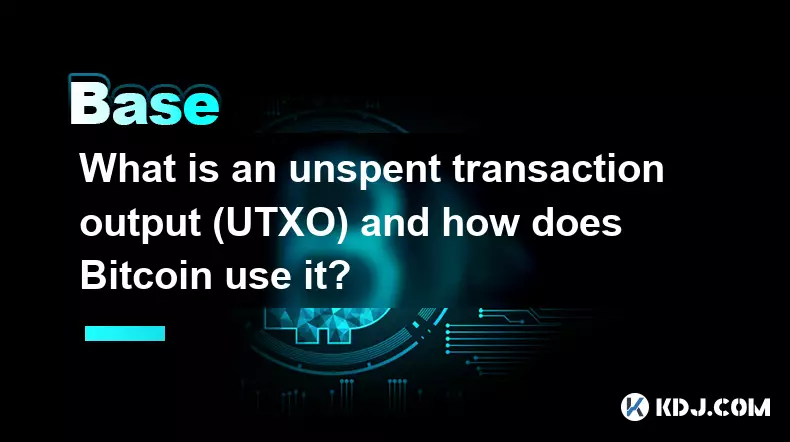-
 bitcoin
bitcoin $95203.028270 USD
-4.12% -
 ethereum
ethereum $3151.730711 USD
-1.61% -
 tether
tether $0.999170 USD
-0.04% -
 xrp
xrp $2.273039 USD
-1.55% -
 bnb
bnb $924.288432 USD
0.14% -
 solana
solana $141.112899 USD
-2.02% -
 usd-coin
usd-coin $0.999964 USD
0.02% -
 tron
tron $0.293976 USD
0.82% -
 dogecoin
dogecoin $0.160772 USD
-1.84% -
 cardano
cardano $0.506357 USD
-3.90% -
 hyperliquid
hyperliquid $37.900515 USD
0.03% -
 zcash
zcash $644.358451 USD
26.66% -
 chainlink
chainlink $14.062007 USD
-2.60% -
 bitcoin-cash
bitcoin-cash $484.381072 USD
-5.12% -
 unus-sed-leo
unus-sed-leo $9.199874 USD
0.27%
How do you analyze a project's token distribution for red flags?
A fair token launch requires balanced allocations, transparent vesting, and strong community reserves to avoid centralization and ensure long-term sustainability.
Nov 12, 2025 at 05:20 pm

Token Allocation and Vesting Schedules
1. Examine the initial token distribution to identify whether a large percentage is allocated to private investors or the founding team. A concentration of tokens in a few hands often leads to centralization risks.
- Look at the vesting periods for team members and early backers. Short lock-up durations or immediate unlocks post-launch can trigger sudden sell-offs, destabilizing the market.
- Projects with transparent timelines showing gradual releases over 2–4 years tend to signal long-term commitment. Immediate access to full holdings raises concerns about profit-driven motives.
- Be cautious if more than 20% of the total supply is assigned to advisors or private sales without clear justification or lock-up terms.
- Verify whether the project publishes official documentation such as a tokenomics dashboard or smart contract details that confirm these allocations.
Public Sale Dynamics and Accessibility
1. Assess how much of the token supply is available during public rounds. An overly small public allocation compared to private rounds suggests preferential treatment for insiders.
- Check for fairness in participation—projects using whitelist mechanisms or lottery systems are generally more inclusive than those allowing unlimited purchases by deep-pocketed actors.
- High minimum buy-ins or exclusive access tiers may indicate an elitist approach, limiting retail investor involvement.
- A red flag appears when less than 10% of the total supply is offered to the general public, especially if combined with high valuations during private rounds.
- Review whether funds raised from public sales are committed to ecosystem development or if they disproportionately enrich early stakeholders.
Supply Structure and Inflationary Pressures
1. Analyze the total and circulating supply growth over time. Rapid inflation due to unstaked rewards or uncontrolled minting can dilute value.
- Determine if there’s a clear max supply cap. Uncapped or algorithmically expanding supplies often lead to devaluation fears.
- Investigate staking incentives—are they sustainable or designed to mask dumping through reward illusions?
- Be wary of projects where future emissions exceed 30% annually without a concrete utility or demand-generation mechanism.
- Cross-check emission schedules against treasury usage plans. If tokens are released faster than they’re being utilized in governance or payments, imbalance looms.
Community and Treasury Reserves
1. Evaluate the size of the community or ecosystem fund. While necessary, allocations exceeding 25% warrant scrutiny regarding oversight and release criteria.
- Transparent governance should dictate how treasury funds are spent. Absence of multi-sig wallets or DAO-controlled disbursements increases misuse risk.
- Frequent withdrawals from reserves without public communication suggest lack of accountability.
- Projects that provide real-time dashboards tracking reserve movements demonstrate higher integrity and operational clarity.
- Confirm whether marketing, partnerships, and developer grants are funded from this pool and whether spending aligns with stated milestones.
Frequently Asked Questions
What does a suspiciously short vesting period look like?A vesting schedule that unlocks all tokens within six months or less for core team members is considered risky. Standard practice involves multi-year cliffs with monthly releases to ensure sustained involvement.
How can I verify if a team has dumped their tokens?Use blockchain explorers to track wallet addresses disclosed in the whitepaper. Sudden large transfers to exchanges shortly after unlock dates strongly indicate selling pressure initiated by insiders.
Why is a high private sale allocation problematic?When private investors receive tokens at steep discounts and hold a majority stake, their exit strategies often prioritize quick returns over project health, leading to price volatility upon listing.
Can a fair launch still have red flags in distribution?Yes. Even projects claiming decentralization through mining or liquidity bootstrapping can exhibit imbalances if mining rewards favor bots or if liquidity provision is dominated by a few wallets.
Disclaimer:info@kdj.com
The information provided is not trading advice. kdj.com does not assume any responsibility for any investments made based on the information provided in this article. Cryptocurrencies are highly volatile and it is highly recommended that you invest with caution after thorough research!
If you believe that the content used on this website infringes your copyright, please contact us immediately (info@kdj.com) and we will delete it promptly.
- Decoding the Crypto Crystal Ball: Will Apeing Outpace XRP and BNB in 2025?
- 2025-11-15 12:25:02
- HBAR, Zero Knowledge, and the Privacy Revolution: What's the Smart Money Doing?
- 2025-11-15 11:40:02
- Crypto Presales Face-Off: Is Digitap ($TAP) Really Toppling BlockDAG?
- 2025-11-15 11:35:01
- Tokenization, 24/7 Markets, and Vlad Tenev: The Future of Finance?
- 2025-11-15 11:30:01
- Bull Market Bonanza: Crypto Presales and Explosive Growth Opportunities
- 2025-11-15 11:25:01
- Crypto Carnage: Navigating Selling and Liquidations in a Wild Market
- 2025-11-14 16:50:01
Related knowledge

What is the difference between a transparent and a shielded transaction?
Nov 10,2025 at 05:59pm
Understanding Transparent Transactions in Cryptocurrency1. Transparent transactions are the standard form of transaction on most public blockchains li...

What is a "crypto airdrop farmer" and what strategies do they use?
Nov 09,2025 at 03:39pm
What Is a Crypto Airdrop Farmer?1. A crypto airdrop farmer is an individual who actively participates in blockchain projects to qualify for free token...

What is an unspent transaction output (UTXO) and how does Bitcoin use it?
Nov 12,2025 at 01:40am
Understanding the Concept of Unspent Transaction Output (UTXO)1. An Unspent Transaction Output, commonly referred to as UTXO, is a fundamental compone...

What is a "governance attack" and how can a DAO be compromised?
Nov 14,2025 at 05:59am
Understanding Governance Attacks in Decentralized Autonomous Organizations1. A governance attack occurs when an individual or group gains disproportio...

How do you track a crypto portfolio across multiple wallets and chains?
Nov 12,2025 at 04:19pm
The Evolution of Decentralized Exchanges in the Crypto Ecosystem1. Decentralized exchanges (DEXs) have transformed how users trade digital assets by r...

What is a "rug pull" clause in a smart contract and how can you spot it?
Nov 14,2025 at 11:40pm
Understanding the Concept of a Rug Pull in Decentralized Finance1. A rug pull refers to a malicious act in the cryptocurrency space where developers a...

What is the difference between a transparent and a shielded transaction?
Nov 10,2025 at 05:59pm
Understanding Transparent Transactions in Cryptocurrency1. Transparent transactions are the standard form of transaction on most public blockchains li...

What is a "crypto airdrop farmer" and what strategies do they use?
Nov 09,2025 at 03:39pm
What Is a Crypto Airdrop Farmer?1. A crypto airdrop farmer is an individual who actively participates in blockchain projects to qualify for free token...

What is an unspent transaction output (UTXO) and how does Bitcoin use it?
Nov 12,2025 at 01:40am
Understanding the Concept of Unspent Transaction Output (UTXO)1. An Unspent Transaction Output, commonly referred to as UTXO, is a fundamental compone...

What is a "governance attack" and how can a DAO be compromised?
Nov 14,2025 at 05:59am
Understanding Governance Attacks in Decentralized Autonomous Organizations1. A governance attack occurs when an individual or group gains disproportio...

How do you track a crypto portfolio across multiple wallets and chains?
Nov 12,2025 at 04:19pm
The Evolution of Decentralized Exchanges in the Crypto Ecosystem1. Decentralized exchanges (DEXs) have transformed how users trade digital assets by r...

What is a "rug pull" clause in a smart contract and how can you spot it?
Nov 14,2025 at 11:40pm
Understanding the Concept of a Rug Pull in Decentralized Finance1. A rug pull refers to a malicious act in the cryptocurrency space where developers a...
See all articles









































































